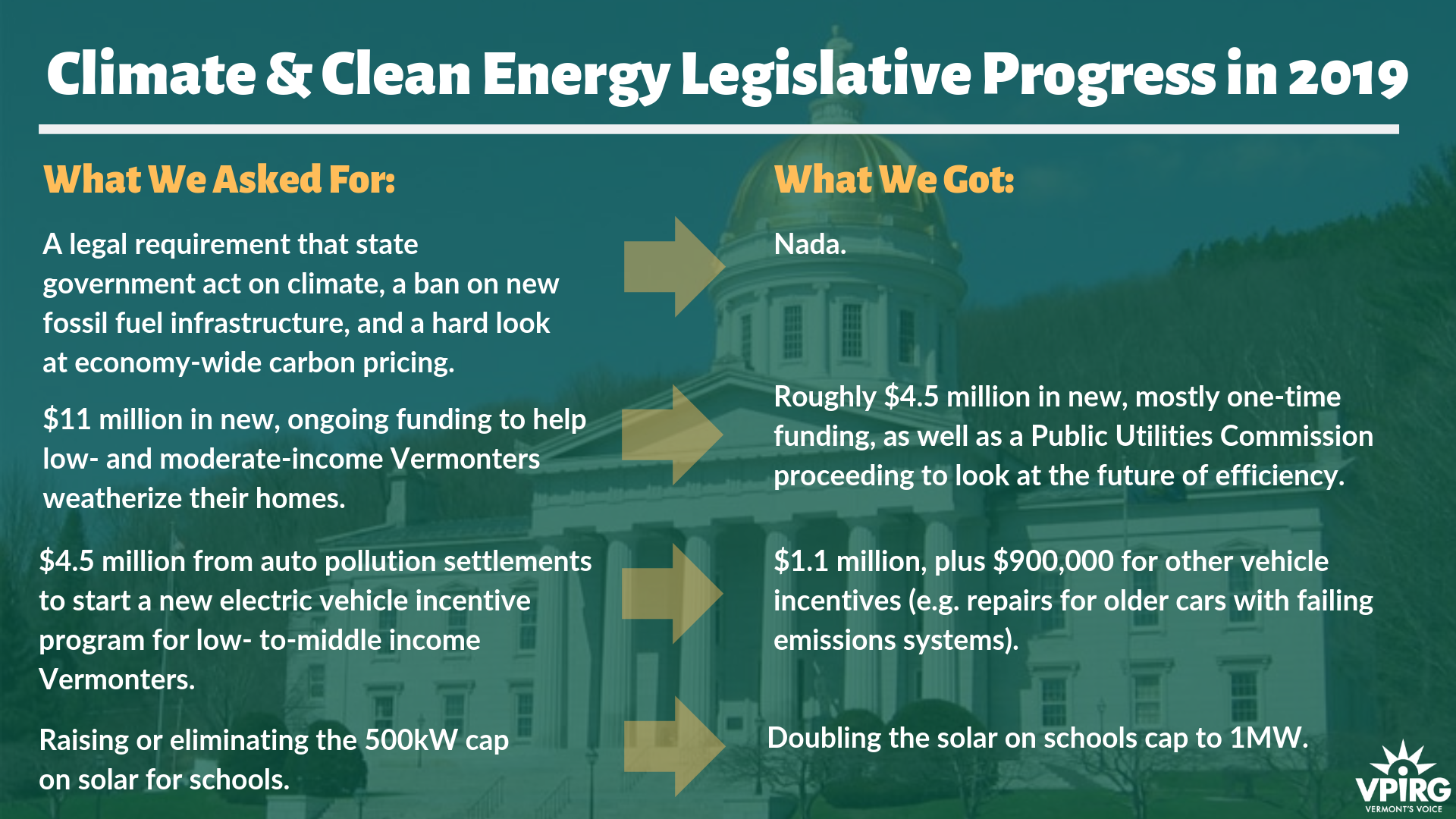This is the tale of two different Vermonts – one of which you’ve likely heard of, and one of which you may not have.
The first Vermont is the one that’s repeatedly been named the “greenest” state in the U.S. The quality of our environment, our actions to protect it, and the work we’ve done on climate have been touted far and wide, but the truth is more complicated.
In some respects, Vermont has earned its status as a climate and energy leader. Our state boasts the highest number of both clean energy jobs and EV charging stations per capita and has the 5th lowest C02 emissions per person of all fifty states.
The second story about Vermont is just as true, however, and perhaps even more important. The reality is Vermont’s climate pollution is up, not down. We’ve taken some big actions, but in recent years Vermont has not just fallen behind neighboring states, we’ve failed miserably in meeting our own climate commitments.
Vermont’s climate pollution has increased 16% since 1990, jumping 10% in just the last two years data is available for, new solar capacity dropped more than 30% from 2016 to 2017, and hundreds of jobs in renewable energy have been lost in just the last three years.
While Vermont has made a commitment to reducing emissions by 26-28% below 2005 levels by 2025 (in line with the Paris Climate Accord) and transitioning to 90% renewable energy by 2050, there’s no way these goals can be achieved if we continue with business as usual.
That’s why VPIRG and our allies went into the 2019 legislative session with a portfolio of pragmatic, achievable legislative goals intended to get Vermont back on track toward its climate and energy commitments.
Unfortunately, the Vermont legislature declined to take significant action on climate this year, instead offering small steps that failed to meet even the modest goals set forth by VPIRG and our allies.
Here’s a breakdown of what we asked for versus what we got:

So, on the smaller things the environmental community pushed for, the legislature took half steps. On the actions anywhere close to commensurate with the challenge of the climate crisis? A few hearings and a promise to keep looking at them next year.
In addition to these modest wins, other steps in the right direction this legislative session included Governor Scott’s signing of S.30, a bill limiting hydrofluorocarbons (HFCs), a class of powerful greenhouse gasses that contribute to global warming, and S.113, the nation’s most comprehensive legislation regulating single-use plastics.
As we look ahead to 2020, there’s no doubt that we need bolder legislative action to tackle the climate crisis head on and ensure that Vermont is walking the walk on climate and energy issues.
That’s why VPIRG and our allies will be doubling down on our efforts to pass the Vermont Global Warming Solutions Act, legislation requiring that Vermont’s government make measurable progress each year toward our climate targets, just as other New England states have done.
Click here to join us in telling Vermont legislators to pass the Global Warming Solutions Act.

